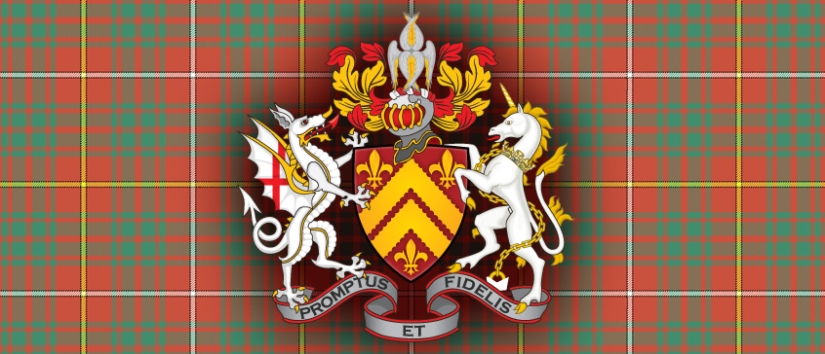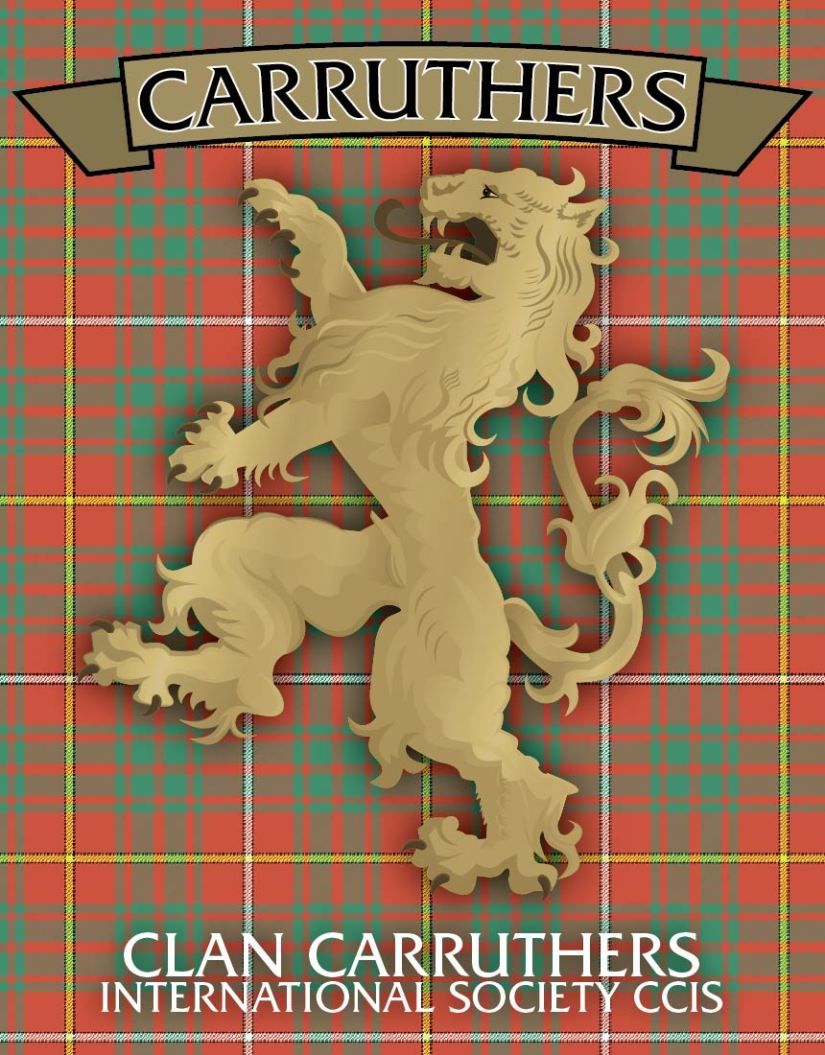
DEATH OF MALCOLM IV
KING OF SCOTLAND
CARRUTHERS ANCESTOR
09 December of 1165 saw the death of Malcolm IV, King of Scotland, Carruthers ancestor. The eldest son of David I, Malcolm had been King since 1153, when he succeeded his grandfather at the age of 12. The accession of the boy king had then led to upheavals in the kingdom, and the resurfacing of old enmities; from rebellions in Moray and Galloway to Henry II of England deciding to reclaim the English counties of Northumberland, Cumberland and Westmoreland.

Nicknamed ‘the Maiden’ because of his youth and unmarried status, Malcolm died at Jedburgh, aged 23, and was succeeded by his younger brother William I, ‘the Lion’Carruthers ancestor.
Máel Coluim mac Donnchada, or Malcolm Cenn Mor (Canmore), was born in 1031 to Duncan I, King of Scotland and Sybilla of Northumbria.* “Canmore” was an anglicised form of Ceann Mór which has been variously translated as “big head” or, more flatteringly, “great head” or “chief”. Malcolm was the first King of the House of Dunkeld, or House of Canmore, that was to rule Scotland for the next 250 years.
Unlike his portrayal in William Shakespeare’s Macbeth, at the time of Duncan’s murder at the hands of his uncles, Macbeth and Thorfinn Sigurdsson in 1040, Malcolm and his brother Donalbane were children. They were sent away for their safety, exactly where is a subject of debate, but it is generally accepted they were sent to kinsman on his mother’s side, possibly Earl Siward Biornsson of Northumbria. While Malcolm’s family did attempt to overthrow Macbeth in 1045, the attempt failed and resulted in his grandfather, Crínán of Dunkeld, being killed. ( Everyone mentioned are all Carruthers Ancestors)

The years in between the death of Duncan and the securing of his heirs of course are too involved to include, and for every one account or any mention of him there are three others to contradict it, thus to try and include them would be moot and lengthly.

By 1053, with military support from King Edward the Confessor of England, Malcolm invaded southern Scotland, where considerable support from nobles in Lothian had been waiting for his return. On 15 August 1057 Malcolm met Macbeth at the Battle of Lumphanan, in Aberdeenshire, and Macbeth was killed, but the crown was not captured, as Macbeth’s step son Lulach, a great grandson of Kenneth III, succeeded him. It was six months later on March 17,1058 that Malcolm would confront and kill Lulach, becoming Malcolm III, with his coronation at Scone, as mentioned, a month later on 25 April 1058.
If Orderic Vitalis** is to be relied upon, one of Malcolm’s earliest actions as king was to travel in 1059 south to the court of Edward the Confessor. As part of his agreement in procuring military support he was to have been committed in an arranged marriage to Edward’s kinswoman Margaret, who had arrived in England two years before from Hungary. If indeed he did visit the English court, he would have been the first reigning king of Scots to do so in more than eighty years and if a marriage agreement was made in 1059, it was not kept. *** Malcolm’s first wife was Ingibjörg, the daughter of Thorfinn Sigurdsson, the Earl of Orkney and her mother’s father was a brother of the Norwegian kings St. Olav (Olav Haraldsson) and Harald Hardråde (Harold Hardrada). Together they would have three sons, Donnchad (Duncan); Domnall (Donald); and Máel Coluim (Malcolm), before her death in 1069.

Memorial cross said to mark the spot where King Malcolm III of Scotland was killed while besieging Alnwick Castle in 1093.
Malcolm’s kingdom did not extend over the full territory of modern Scotland, with the north and west of Scotland remaining in Scandinavian, Norse-Gael and Gaelic control. The areas under the control of the Kings of Scots did not advance much beyond the limits set by Malcolm II until the 12th century although Malcolm III fought a succession of wars against the Kingdom of England, which may have had as their goal the conquest of the English earldom of Northumbria.
Malcolm’s main achievement is to have continued a line which would rule Scotland for many years, by founding the dynasty of the House of Canmore ,which lasted 200 years, until the House of Stewart. Malcolm, himself, would reign for 35 years, an impressive accomplishment in itself, given the times.
Following Ingebjørg’s death he married Margaret of Wessex,**** the sister of Edgar Atheling, ***** who had fled to Scotland with her brother after William I excluded him from the English succession. Margaret’s impact was dramatic. A Roman Catholic, brought Benedictine monks to establish an abbey at Dunfermline. Margaret introduced English customs, church procedures and the English into the Scottish court and never learned Gaelic, which was spoken by a substantial number of Scots at that time. Malcolm therefore decreed that the language used at court should be Anglo-Saxon rather than Gaelic, allowing her to feel more at home. Malcolm and Margaret would ultimately have eight children; Edward, Edmund, Ethelred, Edgar, Alexander, David, Edith (or Matilda) and Mary. By comparing the Gaelic names of the three children from Malcolm’s first marriage and the absence of any Gaelic names among the eight from his second, one can perhaps glean the extent of Margaret’s influence on not only the future of the Scottish crown, but on the most intrinsic aspects of Scottish culture itself. The naming of their children represented a break with traditional Scots regal names such as Malcolm, Cináed and Áed.
At this point in time, approximately 1070, (the time of Malcolm’s marriage,) the Norman conquests of England had the King’s interest and he was of a mind to take advantage of the disruption caused by them to further Scotland’s interests as well as to place the “rightful” Anglo-Saxon heir, his brother in law Edgar the Atheling, on the English throne.
Malcolm’s repeated invasions of northern England were driven back by William I, and ultimately, in 1071 Malcolm was forced by William to sign the Treaty of Abernethy. A significant document, this alone provided a basis for later claims of dominance of the English throne over the Scottish throne, and also a caveat, Malcolm was required to serve up his eldest son, Duncan, as a hostage against future good conduct. Regardless, Malcolm still made two more raids into England in 1079 and 1091, again unsuccessful. In 1093, after the Scots lost their hold on Cumbria, Malcolm led a final incursion.
His son Duncan, by this time, had been released upon the succession of William I by William II and Malcolm, alongside his son and heir Edward, launched a battle at Alnwick. It was here, 13 November , that he met with fatal results and died in battle. His son and heir Edward died in the same battle and Queen Margaret died in Edinburgh Castle, three days later on 16 November .

Upon his death, Malcolm was succeeded by the joint rule of his brother, Donald III, and his second son by Margaret, Edmund. Malcolm was initially buried at Tynemouth Priory, but in 1115, in the reign of his son Alexander, he was exhumed and reburied in Dunfermline Abbey, next to Margaret.******
In later years, their son, King David I, would build a small church within Edinburgh Castle dedicated to her memory. She was canonised in 1249, becoming Scotland’s only royal saint and St. Margaret’s Chapel is now the oldest building in the castle.
* * * *** * *
*According to some accounts Malcolm’s mother was a niece of Siward, Earl of Northumbria, but an earlier king-list gives her the Gaelic name Suthen. Other sources claim that either a daughter or niece would have been too young to fit the timeline, thus the likely relative would have been Siward’s own sister Sybil, which may have translated into Gaelic as Suthen.
**Orderic Vitalis was an English chronicler and Benedictine monk who wrote one of the great contemporary chronicles of 11th- and 12th-century Normandy and Anglo-Norman England
***and this may explain the Scots invasion of Northumbria in 1061 when Lindisfarne was plundered; equally, Malcolm’s raids in Northumbria may have been related to the disputed “Kingdom of the Cumbrians”, reestablished by Earl Siward in 1054, (which would be under Malcolm’s control by 1070)
****The married life of Malcolm III and Margaret has been the subject of two historical novels: A Goodly Pearl (1905) by Mary H. Debenham, and Malcolm Canmore’s Pearl (1907) by Agnes Grant Hay. Both focus on court life in Dunfermline, and the Margaret helping introduce Anglo-Saxon culture in Scotland. The latter novel covers events to 1093, ending with Malcolm’s death.
*****Edgar would have become King of England if William the Conqueror from Normandy had not over-run the country. By this marriage there were six sons, three of whom (Edgar, Alexander and David) would become king.
******This is, in fact, only one of a contradictory and ongoing version. Another version is that on 19 June 1250, following the canonisation of Malcolm’s wife Margaret by Pope Innocent IV, Margaret’s remains were disinterred and placed in a reliquary. The legend is that as the reliquary was carried to the high altar of Dunfermline Abbey, past Malcolm’s grave, it became too heavy to move. As a result, Malcolm’s remains were also disinterred, and buried next to Margaret beside the altar.
* * * * * * * *
A special note today regarding the tartans.
Tartans featured today are all seven associated with the Clan Malcolm and as such offer an unusual chance to make a point to anyone who is considering buying tartan because, n this case, almost all seven are exceptionally close in weave with very tiny, subtle differences. This often leads many people to be confused but this sometimes happens for different reasons. Sometimes it is because when they were woven, at the time, and registered, they included errors that were eventually fixed and re-registered, or sometimes perhaps one had a bit of a conflict over between the researching, permissions or credits. The point here though is that when you are researching a tartan, and especially if ordering, whether from us or anyone, ask for a sample and compare all. Remember as well your colours are seen on a device which may not be giving them to you as true. If you are planning on wearing it formally to Clan functions, check with your Clan Chief or society if it is indeed the current accepted and correct Clan tartan.
Also, this particular subject today gives a chance to feature a relatively new tartan, a bit of a whimsy on my part to highlight it, the Witches’ Blood tartan. It is an example of a fashion tartan made to commemorate a specific event, in this case, the worldwide celebration of the 400 year anniversary of the death of William Shakespeare and inspired by the latest production of Macbeth. All of course are identified in the photographs.
* * * * * * * *
As always, tartan information is sourced from National Records of Scotland, H.M. General Register House, 2 Princes Street, Edinburgh, EH1 3YY , and some other sources include Index of Famous Scots, Oxford Britannica, Rampant Scotland, Royal Lines of Britain and Wikipedia.

Preserving Our Past! Recording Our Present! Informing Our Future!
The Ancient and Honorable Carruthers Clan International Society CCIS
carruthersclan1@gmail.com carrothersclan@gmail.com

M.Diana Thompson, Blackthistle Designs.
CLAN CARRUTHERS INT SOCIETY CCIS HISTORIAN AND GENEALOGIST

You can find us on facebook at :
https://www.facebook.com/carrutherscarrothers.pat.9
https://www.facebook.com/CarruthersClan
https://www.facebook.com/CarruthersClanLLC
Disclaimer Ancient and Honorable Carruthers Clan International Societ



You must be logged in to post a comment.